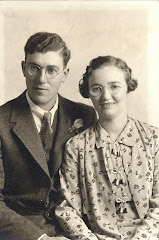"Brief History of Sugar Grove"
"When, in 1792, territory west and north of the Allegheny River was opened for settlement by the Holland Land Company, the good, cheap earth of present day northern Warren County attracted settlers most of whom took up farming. The first permanent settler is thought to have been Robert Miles, a young Scotch Irishman. Many of the first settlers were natives of Scotland and Ireland. In fact, the person who probably did more to build up early Sugar Grove than any other settler was David Brown, who was born in Belfast, Ireland. For a time, Sugar Grove was called “Brownsville”.
Because of the origin of many of the first settlers, the Presbyterian Church was the first house of worship officially begun in the village. Later a Congregationalist Church was established, these churches later to be joined by the Methodist and Swedish Evangelical Lutheran Church congregations.
Sugar Grove grew to be an example of early rural American life. Schools were begun, the first undoubtedly being started in a small log cabin in 1814. It was dubbed the “little school”. A second small school built in 1828 was called the “White School”. Both schools operated until 1854 when a school was built near the village center on land donated by another early settler, John Barr. In 1869 a fourth school, “Miles Hall” was built and became both school and community center for many years.
In 1821, the name of the town was changed from Brownsville to Sugar Grove, (Sugargrove). The present name is derived from the vast original stands of maple forests found in the area. In the 1800’s the roads were rough, and unfinished in condition. They were, in fact, not much more than mere bridal-paths. The village itself was very small. Still, a few business and industries flourished. Among them were the Willson Inn owned and operated by John I. Willson and the Exchange, an important tavern owned and operated by Samuel Hall. There were also mills, both gristmills and sawmills run by water from local streams until the volume of those streams dropped due to the clearing of the local forests. Steam power then was used to run the one tannery and a stave and shingle mill.
In addition there were blacksmiths, general stores, a drug store a tin-shop and a grocery. A bank, post office, and newspaper were also established.
http://www.sugargrovepa.com/history.htm
"The Miller Mansion was the home to the widow Cynthia Catlin Miller, the matriarch of Sugar Grove’s society. From here, Miller organized sewing circles including the Female Assisting Society and the Ladies Fugitive Aid Society which provided aid to escaping slaves. Accounts speak to at least two documented episodes of refuge being provided to escaping slaves as part of the Underground Railroad at her home. On April 7, 1857 Miller’s son details “a fugitive from southern society called at the door this morning. He was a fine-looking fellow of thirty years or so and is making his fourth attempt at visiting Canada.” Prior to that event, Miller was harboring two your girls when in March1849 they were kidnapped from her residence. The local handwritten newspaper, the Sugar Grove Journal, reports of the incident “Modestly secured from the public gaze, they kept within their own easy work, meddling never with nobody. We are horrified to report that one bitterly cold night, they were most ferociously kidnapped! And, to the everlasting disgrace of our police taken off entirely!! They unquestionably were taken south, indeed, there is positive proof that they were seen, a few days afterwards, in a strong walled building, less than a hundred miles south of this place.”
In June of 1854 Sugar Grove was selected as the site of what Frederick Douglass would refer to as "the crowning convention of them all." The Sugar Grove Anti-Slavery Convention boasted keynote speakers Douglass, Rev. JW Loguen and Lewis G. Clarke, the real-life George Harris of Uncle Tom’s Cabin. This event helped secure Sugar Grove its place in history as one of the leading communities in the fight against slavery.
During the two-day Sugar Grove Anti-Slavery Convention at which acclaimed anti-slavery author and lecturer Frederick Douglass was the keynote speaker, Miller welcomed Douglass to her home for tea. Her son writes of the events as “… Frederick Douglass and Dr. Thorne were here to tea. Douglass is stern & eloquent upon the stand and gentle, sociable and altogether agreeable at the fireside. It is but sixteen years since he was a hunted fugitive from a southern plantation.”
http://www.warrenhistory.org/PHMCapp3.htm
http://www.mysugargrove.com/2010CHUGRR
This is the background for Joah Carter when he arrives from Columbia County, NY to Sugar Grove, PA sometime between 1830-1840.





















No comments:
Post a Comment
Thanks so much for taking the time comment!